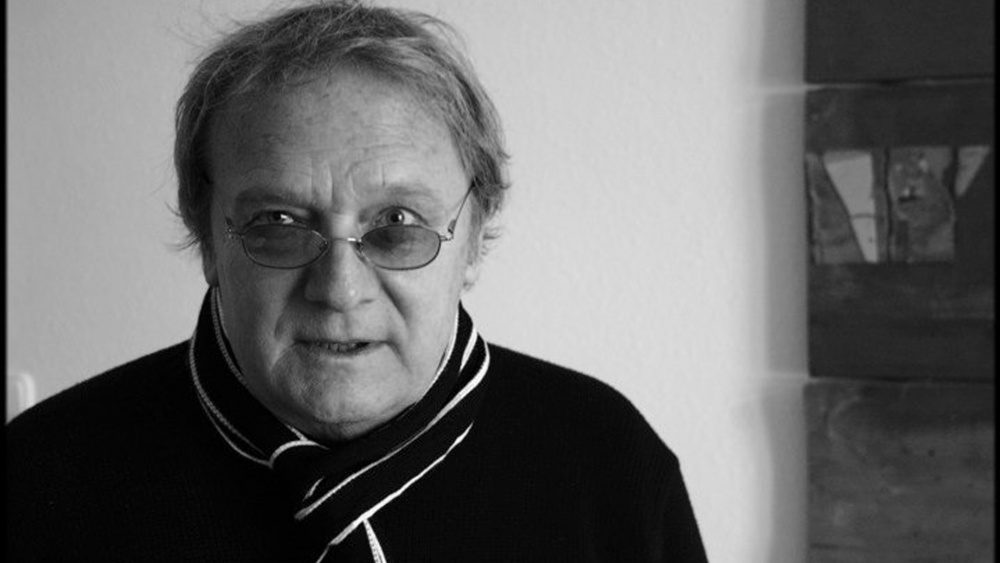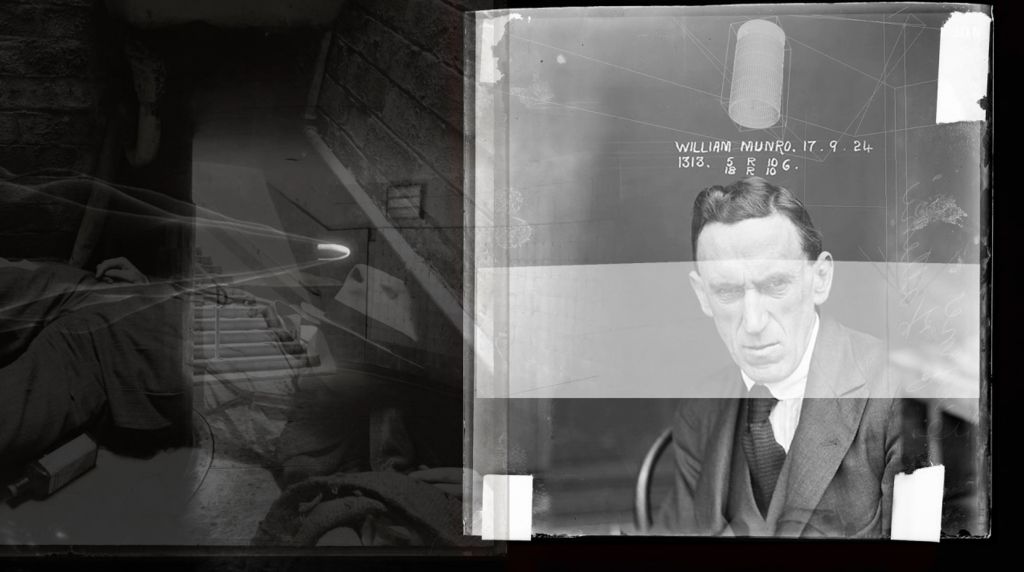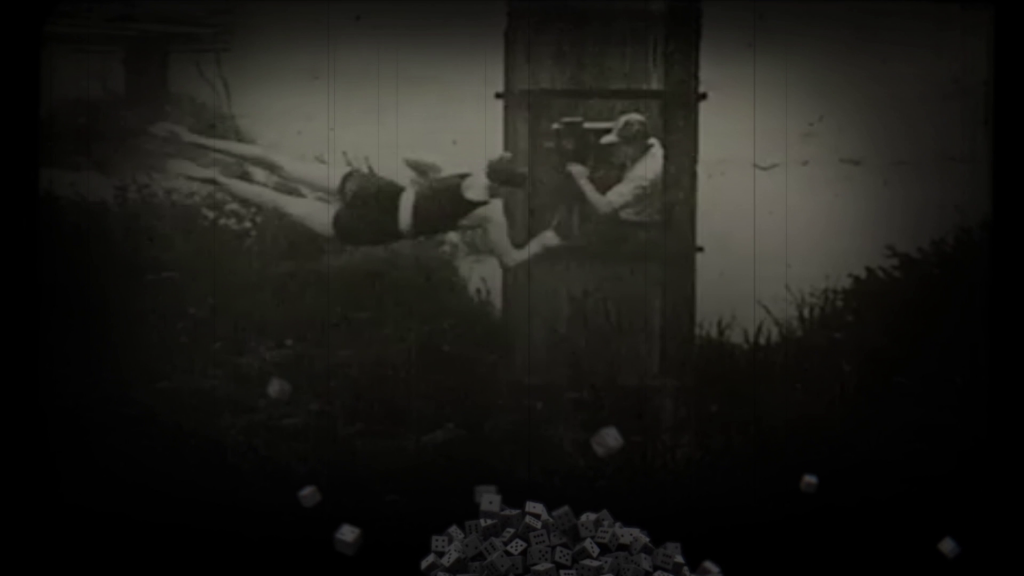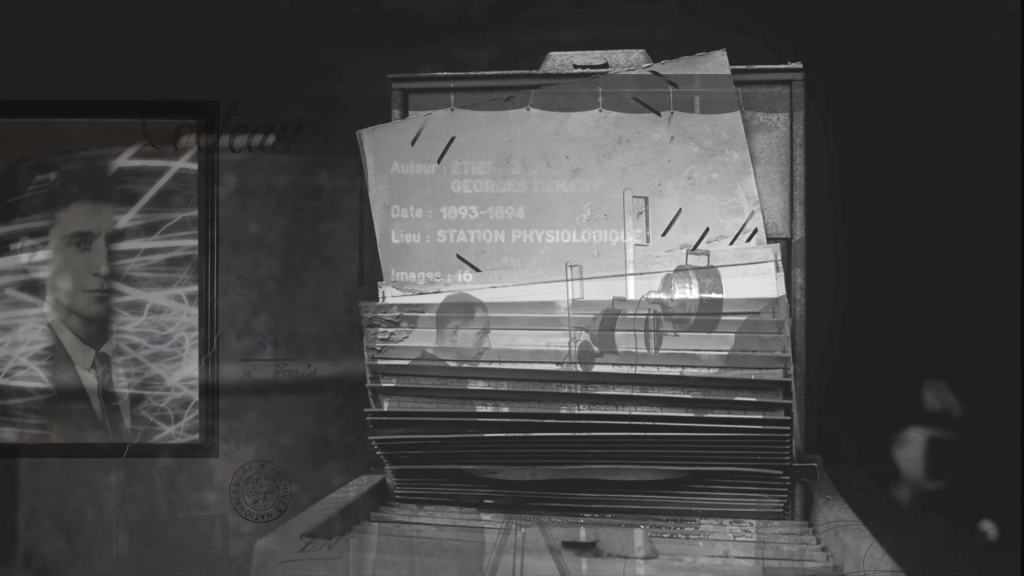Istvan Horkay

Istvan Horkay was born in 1945 in Budapest, Hungary. After graduating from the School of Fine Arts in Budapest in 1964, Horkay was invited to attend the Academy of Fine Arts in Cracow -Poland, the Major Art and Cultural Center of Eastern Europe, where he received his Master of Fine Arts. He continued his Studies at the Royal Academy of Art in Copenhagen, Denmark. (1968) and did additional Post graduate work at the Academy of Fine Arts in Budapest. (1971) Horkay studied under the Internationally know Artist and Theater Director Tadeusz Kantor, as well as Professors, M. Wejmann and J. Nowosielski, Poland/Palle Nielsen/Danmark. He received Diplomas in Graphic Arts, Painting, and Film Animation. He has three children Hes spent a lot of time in the USA. Allentown PA., New York NY, Phoenix AZ, Melbourne FL. Between 1976-2001. Studio 9843 N 48th Place, Paradise Valley. Arizona.
Kleist once wrote: The Poet would be happiest if he could express his Thoughts without Words. (What an interesting Admission! wrote Ludwig Wittgenstein.) Someone, Somewhere is how I title my Works, thinking of the Free Individual, who Himself has become the Center of the of Our Post Human Age, the Focus of Our Collective Memory. The Question is How to give Visual Expression to that Memory, so that the thus created Contents, can leave a Lasting Impression. An Idea or an Image acquires a New Dimension as it is combined with other Images. - The following is from an exhibition review. Horkay's work combines original drawn and painted images, appropriated masterpieces, photographs, artists' signatures and commercial logos. These elements are digitally assembled, i.e., collaged, to create a single, layered moment. This work is post pop, i.e., post modern pop art. Whereas Warhol took moments from popular culture and turned them into history, Horkay takes history and turns it into a moment, as though the past millennium was a monolithic unit of time. Istvan Horkay's Museum Factory images are beautifully printed on archival paper in small, signed and numbered editions.
Artist's Statement
In today’s world, computers are used to simplify our lives. However, as an artist, I find computers and the digital world to be tools that must be taken seriously, because they inherently reflect the artist and his work. If my work is considered in its mathematical and digital realm, then we can see the duality of the human created art and the binary basis of digitizing. It is of the greatest importance that the humanity of the artists reveals itself truly and is not overshadowed by the technology. It is within these considerations that I come to a dilemma where I must find artistic parameters within the unlimited power of technology. When my work is saved as a psd file in Adobe Photoshop, I am at liberty to change, alter, or rework my pieces at will. My pieces, as stored files, remain alive and not complete with the resoluteness of, for example, a painting. Therein lies the challenge of finding closure and the end point to all the pieces. While the technology poses challenges, I find my expression in the limitless possibilities of producing my art in any shape or size allowable. Having this digital world as my artist’s tools allows me to cross-reference literature and poetry with imagery. It is within the layering and the cross-referencing that the artist’s character and soul emerge. To me, each layer is another virtual poem laid upon another one. My works contained hundreds of layers, each seperate as it’s own poem, yet each connect to all as a whole. My goal is create a new genre of digital art, what I call “virtual poems”.
Horkay Istvan
EXHIBITIONS:
1970 Cracow Poland 1974 Warszawa Poland 1990 Budapest Hungary 1990 Stuttgart Germany 1990 Edmonton / Alberta / Canada 1991 Budapest Hungary 1992 Budapest / Opera House / Hungary 1992 Sienna / Word Meeting ISRA / Italy 1993 Rotterdam/Word Trade Center / Holland 1994 Budapest / Vigado Gallery / Hungary 1995 Melbourne / Florida / USA 1995 Delft / Gallery Brocades / Holland 1996 Brussels / Belgium / 1997 Galery / Arten Budapest / 1998 Zurich / Gallery Art Felchlin / 1999 Budapest Gallery XXI 2000 Dolores Chase Gallery / Salt Lake City / USA 2000 Gallery de Griffel / Utrecht / Holland 2000 Gallery XXI. Budapest / Hungary 2000 St. Petersburg / Russia / 2000 Scottsdale / American Fine Art Editions Inc. / 2001 Budapest / Las Vegas / 2001 Moscow / Russia / Hungarian Ambassy 2001 LeslieSacks Art Gallery Los Angeles 2001 /Web Exibition/http: /Leslie Sacks Gallery 2002 Scottsdale / American Fine Art Editions Inc. /
2002 Eastern Washington State University/EWU/Art Gallery 2002 Kamiyamada /Japan/ 2003 LeslieSacks Fine Art Los Angeles/Web Exibition/ 2003 Collegium Hungaricum/Berlin/ 2003 American Fine Art Editions Inc/Scottsdale 2003 LeVall Art Gallery Novosibirsk/ Russia
-
2003 LeVall Art Gallery Novosibirsk/ Russia
-
2004 Gutman Galery Budapest
-
2004 GGalery Budapest
-
2004 Peter Greenaway /Tulse Luper Film There
-
2004 Canariasmediafest
-
2004 Australia IDAA
-
2004 Academy Gallery University of Tasmania
-
2004 QUT Art Museum Brisbane,
-
2004 VCA Gallery Australia
-
2004 Montreal Festival of New Cinema
-
2005 Belgrade/Closed Circuits/
-
2005 VCA Gallery University of Melbourne
-
2005 QUT Art Museum BRISBANE
-
2005 Beijing Today Art Museum
-
2006 New Delhi India CEC+CAC
-
2006 QUT Art Museum Australia
-
2007 Metro5 Gallery Australia
-
2009 Jewish Museum of Australia
-
2009 Collegium Hungaricum Berlin
-
2009 Gallery art 6 Richmond/ Virginia
-
2009 QACI Gallery, Queensland/ Australia
-
2010 Corona d'alloro alla carriera artistica Europclub Regione Sicilia (Italia) con Ennio Morricone, Giovamna Mulas
-
2011 Ballarat International Foto Biennale/Australia
-
2012 Vision in Motion/Melbourne Australia
-
2012 Vision in Motion II./ Roma/ Sapienza - Università di Roma/ Accademia d'Ungheria in Roma
-
2012 The One Thing / Manning Clark House/ Canberra /Australia
-
2012 The Little Mermaid / ANU Art Gallery /Canberra/Australia
-
2014 Accademia d'Ungheria in Roma
-
2014 Brenda May Gallery Sydney Australia/Head On Photo Festival
Some remark
The newest Collages, Photo-Transformations of Horkay, in a certain regard are the continuation of the previously established visual formatting and creating methods. This are not simple extract ions, or not only the verifications of his knowledge to select from the wide tradition of visual art, but a selection for a purpose. In the newest visual theory research there is a higher emphasis on analyzing image anthropology (Hans Belting). Horkay's artworks are directive by that respect. By giving more prominent value to the expression of the implied anthropological substance, to the gesture, to the pose, he does not simply create a more significant work as before, he implies those rudiments (elements) into his statement. The anthropologists, and along them the contemporary DADA is not deterred from the realization, that applying body language and positioning in the visual creativity process has tremendous meaning value. That applies for Horkay's art also. The power and expression of his work comes from the application and combination of the redemption of the meaning, and the statement of gesture, pose and body. Wolffin stated already in 1921, that the vision has explanatory and illustrative features, meaning we do not simply see, we see something by something - by that a vision is able to refer to not only itself, but to assign to a certain relation trough it, which is more than the ordinary sight itself, since we never see only the picture.
A picture born by a vision.
"And yet, word is not the life. People talk just to attack something or to defend themselves.
But the one who refuses talking...
How secretful a picture is... A gleam...
Bacsó Béla
Bela Bacso is professor and chair of Aesthetics at Eötvös Loránd University in Budapest (Hungary).
He has translated Heidegger, Gadamer, etc. into Hungarian. His Hungarian language publications include The Art of Understanding and Understanding Art(1989);
Borderlines: Hermeneutical Essays(1994); The Shadow of the Word: Understanding Paul Celan's Poetry (1996), "Because it is not us that know..."(1999), Writing and Forgetting (2001), as well as a colletion of essays in German, Die Unvermeidbarkeit des Irrtums. Essays zur Hermeneutik Junghans Cuxhaven-Dartford 1997.
Recent publikations: The Will to Truth in. Nietzsche, Epistemology and Philosophy of Science.
Nietzsche and the Sciences II. ed. Babette E.Babich Kluwer Ac. P. 1999., and "Wille zur Wahrheit" als Kunst der Interpretation in.
"Jedes Wort ist ein Vorurteil": Philologie und Philosophie in Nietzsches Denken ed. Manfred Riedel Böhlau Köln/Weimar/Wien1999
http://www.horkay.com/essay-2.htm
THE OVERPAINED WRITTING
by Bela Bacso
„And yet, word is not the life. People talk just to attack something or to defend themselves.
But the one who refuses talking...
How secretful a picture is... A gleam...
that cannot be explained.”
Bram van Velde
Quite common is when a painter traces the pictures of one-time artists to learn from them, to crib their secrets, to employ their knowledge for this own picture making fantasy. It could be quite common; but Horkay traces not Leonardo or Rubens, but a text, namely the first handwritten page of Freud’s Entwurf einer Psychologie (1985), the mode how Freud’s hand was writing, how he transformed the thought into a tangle of signs and letters. On the write surface (all-permitting and resistant at the same time) the Freudian text appears as a kind of a culture historical frottage – if I may use this term in a somewhat figurative sense after Max Ernst. The text does not mean simply itself; it is hardly eligible. The meaning of the picture is born from an „injury” to the tangle of words. The never re-whitenable surface is penetrated by colors; constancy is re-achieved, since the retraced (frottage), and all written artpiaces lose permanency with advancing time.
Horkay’s art is epitomic in the double meaning of the word: a fragment, an incised part of something already in existence, and – just because of this incision – is an injury to the finished surface, to the tangle of writing or a finished picture. This relies on the experience that man, handing himself down through signs, simulates a kind of sense-wholeness. In these series this textual sense-wholeness appears to be ever different as different colors enter the surface at different sites. It is the same and not the same at the same time. „Once the signs are scars, then the wounds will tell tales of some non-alleviated history” (D. Kamper – Zur Soziologie der Imagination Hanser V. 1986. p. 148). The sign will temporarily closen over the story. Who else would know this better than Freud, who, after the neurological-physiological and neuropsychical phases, so deeply doubted that it was possible „to bring to light the hidden content in its wholeness” (Konstruktionen in der Analyse 1937. in: Stud. Ausgabe Ergb. Fischer V. 1982. p. 398).
This culture historical „frottage” is an artistic reminder of the liberating and deeply doubt-evoking act of the Freudian turn, namely that everything what gains sense in the sign is not the movement of sense itself, but that of alternating meanings, a re-determination of the sign from the past history. The presence of unclosed and non-fulfilled alternatives in relation of the emerging sign is a pioneering idea of the Freudian psychoanalysis. „Interpretation comes fully untied in sense relations, and will understand the force relations (Verdragung, Wiederkehr des Verdrangten) only through these sense relations (Zensur, Entstellung, Verdichtung, Verschiebung).” ) P. Riceur – Die Psychoanalyse und die Kultur der Gegenwart in u. o. Hermeneutik und Psychoanalyse. Der Konflikt der Interpretationen II. Kosel V. 1974. p. 65).
Painting did not, and naturally, could not withdraw itself from this turn, be it termed „Beyond Painting” by Max Ernst, or „die Aesthetik des nichtrelationalen Bildes” by the art historian G. Boehm. Beyond what, and non-related to what: this is the principal and unavoidable question of artistic painting in our culture. Horkay’s pictures offer a rather interesting answer to this. Embedded in the artpiece, Federico da Montefeltro and Battista Sforza, two figures of Piero della Francesca are exposed to us as a well considered „collage”. In this delicious double portrait of the Quattrocento the harmonically arranged, perspectivic landscapes form the background of man, in the foreplan of which man is posted in a way that his rule is unquestionable. The subdued nature expresses the man „free in himself” as well as the formidable maladjustment this glorified man has to face when his attention is focused only on himself, as it comes from the superior position of possessing everything. This is expressed by A. Chastel’s remark to Whipping of Christ, a picture by Piero della Francesca: „He augments both the arithmetical sense and the intensity of colors to the utmost point, thereby transforming Universe into a bright, unslotted cage, where mankind can never lose its way.” (Chastel – Italian Art, Corvina 1973, p. 113).
The great late modernists (Cezanne, Klee, Ernst, etc.) wanted to break out from this well arranged and well interpretated world, the prison of supposed possessing of truth. The free-in-himself man, the man making himself as the center, has re-presented the world for himself in the monoperspective of this all-self-reference. As worded by Florenszkij: „Artistic truth has once and forever disappeared from Western religious painting – the process starting from the Renaissance –, and though the painters declared their closeness and fidelity to depicted reality, in fact that had nothing common with the true reality whose depiction they took the liberty of, or formed a right to. (Florenszkij – The Iconostas, Corvina, 1988, p. 30).
In Horkay, the application of the painting historical element in the picture is a remembrance of an era we are over; over we are the naive relatedness created by perspective, and over we are the picture creating technique that relies on the latter. The application is neither parodistic, nor is an ironic citation, but is an emergence-transparence of a pictorial element of a past era as an item of a set. This set – writings, documents, stamps, painted pictures, etc. – is not else than some accumulated mass of culture and knowledge that surrounds us as a fermenting and evaporating hill of rubbish, of which everyone tries to save something, as allowed by his own fancy and the laceration and destruction degree of the hill itself. The question is how in this „post” era motion develops at all from the radiating, energy-saturated set in our cultural memory at the returning of the displaced, the postponed, the passed and the repressed. An experiment to create a „scientific psychology”, the „Entwurf” is closing of an era, when, naturally, the great ideas of the analytical age are already in preparation. Derrida’s criticism seems to be rightful: „If we start from a hypothesis postulated in the Entwurf twenty years ago, namely that a permanent trace supposes that a road section (Bahnung) is deliberated and some resistance is overcome, than we have to conclude that there is no trace at all, since there is no opposing resistance.” (Derrida – Die Postkarte II. Brinkmann–Bose V. 1987. p. 107).
No kind of memory will be born from the increase of quantity, since on well-travelable, non-inhibited road sections the latent time section is short, and the content is manifested rapidly. We can say, the conscience-fitness of perception is uninhibited, that is, referring to the Wunderblock, without permanent trace, it acts as a traceless, non superscripted sheet of paper. As we know it from Freud’s writings, memory is formed on sites of permanent traces, and due to discontinuous innervation, elements formed at different times can be stored in the same neuronal layer. Memory cannot be compared to a laboratory settling system in which particles ariving later will, by necessity, be positioned in ever upper layers. Bahnung is not a continuous-linear movement from the unconscious through the preconscious to the conscious. „Trace as memory is not a pure Bahnung that could be acquired again and again in a simple present. Trace is an ungraspable and invisible difference among the Bahnungs. (Derrida – Freud und der Schauplatz der Schrift in u. o.: Die Schrift und die Differenz Suhrkamp 1976, p. 308). Freud showed that delay, postponing, supplementarity are inseparable from life, while Derrida in this radical Freud interpretations criticised the time to time emerging naivity of transcription und translation, and the belief that the mind would be a motionless „text”.
In his pictures Horkay overpaints, incises the written signs of the „Entwurf”; in other words, he tears up the signs that close past history as „scars”. This is summoning of what cannot be forced into signs. Painting becomes a „chromatic language” (P. Kaufman) which, now far away from the pure presence of the self-exposing re-presented, presents the painting to us as something „deferred”, as it was worded by M. Duchamp. Due to its time-giving nature, delay is the eternal supplement to the same thing, and thus it will never liquidate the picture, but makes it infinite, resistant to any intrusion.
The „post-human” art of our era has moved the farthest away from the ideal which reached the calmness of total emptiness by putting instincts to silence. (cf. Lyotard – Essays zu einer affirmativen Aesthetik Merve V. 1982, p. 106). Opening the art toward the inherently uncertain existence of man, toward the layers of past history that cannot be covered by signs, promises the possibility that man, on some non-distincted place, will re-experience the world as something of his own, where he will be most essentially concerned by what surrounds him. Then the artpiece will not serve to put to silence ”... what conceals itself, what calls some self-concealing repulsion in man from what can be neither planned or controlled, nor calculated or performed.” (Heidegger – Die Herkunft der Kunst und die Bestimmung des Denkens in u. o.: Denkerfahrungen Klostermann V. 1983. p. 148).
http://www.horkay.com/essay-1.htm
http://www.horkay.com/essay-2.htm
Kleist once wrote: “The Poet would be happiest if he could express
his Thoughts without Words.”
(“What an interesting Admission!” wrote Ludwig Wittgenstein.)
„Horkay's art is epitomic in the double meaning of the word: a fragment, an incised part of something already in existence, and - just because of this incision - is an injury to the finished surface, to the tangle of writing or a finished picture. This relies on the experience that man, handing himself down through signs, simulates a kind of sense-wholeness. In these series this textual sense-wholeness appears to be ever different as different colors enter the surface at different sites. It is the same and not the same at the same time. "Once the signs are scars, then the wounds will tell tales of some non-alleviated history" (D. Kamper - Zur Soziologie der Imagination Hanser V. 1986. p. 148).
The sign will temporarily closen over the story. Who else would know this better than Freud, who, after the neurological-physiological and neuropsychical phases, so deeply doubted that it was possible "to bring to light the hidden content in its wholeness"
(Konstruktionen in der Analyse 1937. in: Stud. Ausgabe Ergb. Fischer V. 1982. p. 398).
Bela Bacso
More
http://www.horkay.com/essay-1.htm
“Someone, Somewhere” is how I title my Works, thinking of the Free Individual, who Himself has become the Center of the of Our Post Human Age, the Focus of Our Collective Memory.
The Question is How to give Visual Expression to that Memory, so that the thus created Contents, can leave a Lasting Impression.
An Idea or an Image acquires a New Dimension as it is combined with other Images.
Horkay “would like his Works to be Visual Poetry and Philosophy.
Przeszłe wydarzenia
- 29.09.2014, 20:00 - 23:00, Ośrodek Teatralny Kana, Around the World In 192 Minutes
Filmy
- Mother4' 53''
- The Naked Lunch II4' 19''
- Archives II2' 17''
- The Russia House II3' 51''
- Jenseits des Lustprinzips6' 27''
Jenseits des LustprinzipsProduction: 2014
Audio:
Intro/ Hungarian Level Water report
Sound/ Roland Quelven
Voice/ Sigmund Freud & Melancholy Maaret
Footage: Sydney Police photographs dating from 1912 to 1948A bicephalous collaboration transcribed into a diptych composition related to Freud's book «Beyond the pleasure principle». Through an examination the role of repetition compulsion in potentially over-riding the pleasure principle, Freud ultimately developed his opposition between Eros, the life instinct, and Thanatos, the death drive.
czytaj więcej
- Raoul Wallenberg61'
Raoul WallenbergProdukcja: 2014Niezwykła – i jednocześnie typowa dla wielu obywateli Europy w XX wieku – historia Raoula Wallenberga, szwedzkiego dyplomaty, który działając razem z innymi pracownikami ambasady Szwecji w Budapeszcie, uratował przed Zagładą około 100 tysięcy węgierskich Żydów. Dziesięć tysięcy Węgrów otrzymało od Wallenberga szwedzkie paszporty, kilkuset zatrudniono w ambasadzie i zakwaterowano w domach objętych immunitetem. W styczniu 1945 r. Wallenberg został aresztowany przez NKWD pod zarzutem szpiegostwa na rzecz USA. Film opowiada jego historię oraz dzieje nazistowskich i radzieckich zbrodni w niesztampowej, eksperymentalnej formie.czytaj więcej







